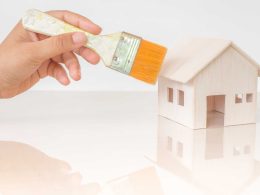Fire safety is a top priority for everyone, especially property owners. With the recent increase in fire incidents, the government has become more strict with enforcing cladding fire regulations. These regulations aim to protect buildings and their occupants from the devastating effects of fires. However, navigating these regulations can be complex and overwhelming, so we have compiled this informative blog post.
In this article, we will go into detail about what cladding fire regulations are, the requirements of these regulations, the types of cladding and fire ratings, and the importance of complying with these regulations. We will also provide tips on ensuring that your property complies with cladding fire regulations and discuss the benefits of following them. Lastly, we will touch upon some of the challenges that come with meeting these regulations so that you can stay informed and prepared.
What Are Cladding Fire Regulations?
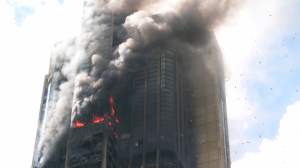
Cladding fire regulations are a set of guidelines and standards put in place to ensure that buildings are safe from the risk of fire. These regulations typically relate to using combustible materials in constructing a building’s exterior, such as cladding. Following several high-profile fires in recent years, there has been increased scrutiny of these regulations, with many experts calling for stricter enforcement and more rigorous testing procedures.
In some cases, buildings may need to be retrofitted with new cladding or other fire-resistant materials in order to comply with these regulations. It is important for building owners and managers to stay up-to-date on the latest requirements and guidelines related to cladding fire regulations in order to ensure the safety of their occupants.
What Are the Requirements of Cladding Fire Regulations?
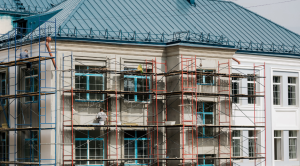
In order for a building to satisfy cladding fire regulations, the external walls must be made of non-combustible or low-combustible materials. There are several ways to achieve this, including using masonry, stone, render or other solid wall construction; rain-screen systems with a non-combustible or low- combustible board fixed to the structural frame; or an external wall system that has a layer of cladding over an inner leaf of either masonry or another solid material.
The thickness of the cladding will also need to be considered when selecting a material, as will the fire performance. For example, some rain-screen systems have been tested to show they can provide up to four hours’ worth of fire resistance. In addition to the materials used, the way in which the cladding is installed is also important. It should be fitted in such a way that there are no gaps or voids where a fire could spread, and any joints should be sealed properly.
Types of Cladding and Fire Ratings
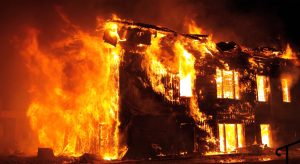
When it comes to cladding, there are six major types that are commonly used, and each has its own fire rating. Here is a quick guide to help you understand the difference:
The A-rated cladding is made of materials that will not catch fire or contribute to the spread of flames. This is the safest type of cladding to use in areas with a fire risk.
The B-rated cladding has a very limited ability to contribute to the spread of flames. This type of cladding is often used in areas with a low fire risk.
The C-rated cladding cannot contribute to the spread of flames. This type of cladding is often used in areas with moderate fire risk.
The D-rated cladding can greatly contribute to the spread of flames. This type of cladding is often used in areas with a high fire risk.
The E-rated cladding can greatly contribute to the spread of flames. This type of cladding should only be used in areas with an extreme fire risk.
The F-rated cladding is highly flammable and will easily catch fire and contribute to the spread of flames. This type of cladding should only be used in areas with extreme fire risk and other safety measures are in place.
The Importance of Complying with Cladding Fire Regulations
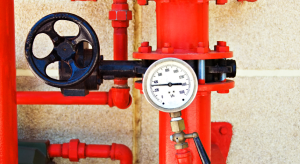
Complying with cladding fire regulations is crucial for ensuring the safety of buildings and their occupants. In recent years, several high-profile incidents have highlighted the dangers of non-compliant cladding, which can quickly spread fires and put lives at risk. By following regulations and using approved materials, building owners can help prevent these tragedies.
It is important to work with qualified professionals who understand the regulations and can ensure that all necessary steps are taken to comply with them. Building owners are also responsible for regularly maintaining and inspecting their cladding systems to ensure ongoing compliance. Ultimately, prioritizing compliance with cladding fire regulations can help to keep people safe and protect valuable assets.
How to Ensure That Your Property Is Compliant With Cladding Fire?
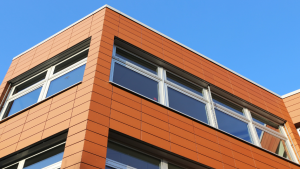
If you are a property owner, you must ensure that your building complies with cladding fire standards. Here are some tips on how to do so:
- Check with your local authorities to see what the specific fire regulations are in your area.
- Ensure your property is updated with all the latest fire safety legislation.
- Get in touch with a professional cladding contractor who can advise you on the best way to make your property compliant with the latest fire standards.
- Ask for quotes from several contractors to compare costs and find the best value for money.
- Once you have found a reputable contractor, work with them closely to ensure that all the necessary work is carried out properly and to schedule.
By following these tips, you can be confident that your property is compliant with all the latest cladding fire standards and legislation.
The Benefits of Following Cladding Fire Regulations
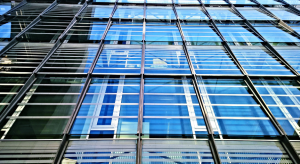
When it comes to cladding, fire regulations are in place to protect both commercial and residential buildings. Fire-resistant cladding can help prevent the spread of fire and provide extra protection in the event of a fire.
All new commercial and residential developments in the UK must comply with strict fire safety regulations. This includes the use of fire-resistant cladding on the exterior of buildings.
Fire-resistant cladding is made from materials that are designed to resist fire and heat. This type of cladding can help prevent the spread of fire and provide extra protection in the event of a fire.
There are many benefits to using fire-resistant cladding, including:
- Reduction in the spread of fire: Fire-resistant cladding can help to reduce the spread of fire by acting as a barrier between floors and rooms. This can help to protect people and property from damage.
- Increased protection: Fire-resistant cladding can also provide increased protection in the event of a fire. The material is designed to withstand high temperatures, making it ideal for protecting people and property during a fire.
- Improved aesthetics: Fire-resistant cladding is available in a variety of finishes, meaning it can improve the look of a building while still providing adequate protection against fires.
Challenges with Meeting Cladding Fire Regulations
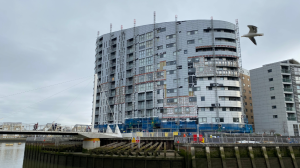
Meeting cladding fire regulations can be challenging for many building owners and managers. One of the biggest challenges is identifying the materials used in existing cladding systems, which can be difficult to determine without extensive testing. Additionally, retrofitting them onto existing buildings can be costly and time-consuming even when compliant materials are identified. Another challenge is keeping up with changing regulations and standards, which can require frequent updates to cladding systems. Despite these challenges, it is essential to prioritize meeting cladding fire regulations to ensure occupants’ safety and comply with legal requirements. Seeking guidance from professionals in the field and staying informed on current regulations can help navigate these challenges more effectively.
Conclusion
To conclude, Cladding Fire Regulations are complex and require a thorough understanding of the different types of cladding available and their respective fire ratings. It is essential to comply with these regulations to ensure residents’ safety and prevent potential disasters. Following these regulations can also bring various benefits, such as enhancing property value, increasing tenant confidence, and avoiding legal implications. However, meeting these regulations comes with its own set of challenges that must be addressed properly.








